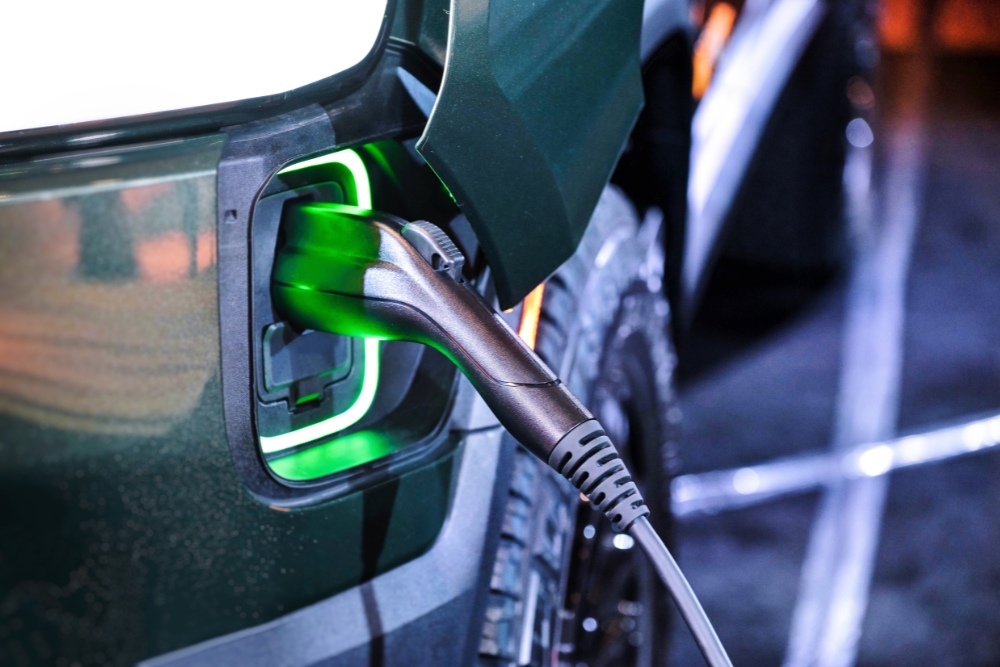What the 2025 UK Budget means for fleet managers and drivers
By SG Fleet | 27 November 2025

At a glance
- Fuel duty forecast to rise again from 2026 under the 2025 Budget, changing long-term running costs of petrol and diesel cars.
- Electric vehicles gain a higher threshold for the expensive car supplement, but face a new mileage-based road charge from 2027.
- Tax threshold freezes could reshape take-home pay and benefit choices across workforces.
- Capital allowances move further in favour of leasing, with slower tax relief on purchased cars.
The 2025 UK Budget for Drivers
Fuel duty shifts in the coming years.
The 2025 Budget outlines a phased unwinding of the temporary 5p fuel duty cut from 2026, which will move duty back towards its long-term path. These increases lift the running cost of petrol and diesel cars, and are set for a staggered start in September 2026. This matters hugely for anyone thinking about whole-life cost.
The shift will impact the long-term gap between petrol and diesel models and electric cars, especially once electricity prices ease through lower wholesale energy costs, something also discussed in the Budget.
Electric cars to face mileage-based charge.
The UK Budget will also impact electric vehicles. From April 2028, the Government plans a distance-based tax for EVs and plug-in hybrids. The initial rate is set at 3p per mile for battery-electric cars and 1.5p per mile for plug-in hybrids, rising each year with CPI. This tax is still lower than the fuel duty equivalent paid by petrol and diesel drivers, but it does mean that driving an EV no longer places you outside road-use taxation.
For drivers thinking of switching to company car schemes or salary sacrifice arrangements, it means running-cost calculations will change again from 2028 onwards. While EVs remain attractive in tax terms, the new charge adds a clear cost line that needs to be included in monthly budgeting.

Higher VED on some cars and relief for higher-value EVs
The expensive-car supplement (ECS) becomes lighter for electric models from 2026. The threshold moves from £40,000 to £50,000 for EVs, lifting some models out of the five-year surcharge. At a time when VED is rising overall through Retail Price Index (RPI) uprating, the change could well help drivers who lean towards larger or longer-range EVs.
Pay, tax thresholds and take-home impact.
The 2025 Budget extends freezes to personal tax thresholds deep into the decade. More employees will be drawn into higher-rate bands as wages rise faster than thresholds. This matters for company car decisions because company car tax is tied to income-tax bands.
In short, higher taxable earnings mean a higher percentage applied to the car benefit. Employees with new or upgraded roles face steeper BiK bills than before, even though the rules themselves haven’t changed.
The Budget also removes NIC exemptions for salary-sacrificed pension contributions over £2,000 a year from 2029. While this won’t affect car salary sacrifice directly, it might shift the overall reward mix. Where pension sacrifice becomes less efficient, an employee may pay more attention to the value of a structured car benefit.
Household budgets recover slowly.
Real household disposable income is set to rise by only a quarter of a per cent per year across the forecast window. Combined with steady inflation in everyday costs, this will doubtless impact how appealing fixed-cost driving solutions feel. Drivers might lean more in favour of predictable monthly costs, tax-efficient cars, and long-term commitments that make unexpected expenses less common.
Do you need help in assessing what the 2025 budget means for you?
Our team is on hand to give advice and support. For salary sacrifice drivers, call 0344 85 45 161, or email consumer@sgfleet.com. If you’re a fleet driver, contact your driver helpline, or call 0344 85 45 123. If you have general questions, then get in touch through our website.
The 2025 UK Budget for Fleet Managers
Operating costs remain under pressure.
The OBR’s economic outlook projects inflation around 3.5% in 2025 and 2.5% in 2026, with only some gradual easing by 2027. Rising prices for parts, servicing, repairs, and consumables will all feed directly into fleet budgets. Even with slight relief in wholesale energy prices, fleets face a multi-year environment where cost discipline becomes more and more important.
Finance and leasing costs remain elevated.
Bank Rate appears set to decrease only slightly from 4% by 2026 and then edges back towards 4% later in the decade. Gilt yields sit even higher through the forecast. If your fleet uses a funded model, these interest dynamics mean lease pricing remains above the levels seen during the 2010s.
Capital allowances shift towards leasing structures.
The 2025 Budget cuts the writing-down allowance from 18% to 14% from April 2026. There will also be a new 40% first-year allowance from January 2026. Cars and second-hand assets are excluded from the upfront allowance, so if your business buys cars outright, it could lose a slice of relief.
Leasing providers, however, will receive the new allowance, which strengthens a shift away from owned fleets and towards funded or outsourced solutions, where the lease provider can potentially access tax advantages that individual companies might not be able to. In general, fleet teams assessing the lifetime economics of buying versus leasing will likely see clearer divergence from 2026 onwards.
EV fleet strategy becomes more complex.
The new mileage-based road charge from 2028 introduces a cost variable that wasn’t present in electric-fleet planning in the past. Although EVs still gain favourable BiK treatment and avoid full fuel duty, the new charge will affect budgets based on annual mileage profiles.
The 2025 Budget’s impact on the electric vehicle market could be a softening one, at least temporarily, as a result of this new charge. The OBR suggests manufacturers may reduce ICE output or lower EV prices to meet Zero Emission Vehicle (ZEV) mandate quotas. Fleet managers may therefore see changing price dynamics, especially across higher-volume models.

VED rises and ECS changes after whole-life cost calculations.
Thanks to RPI uprating, VED tax receipts are set to increase, and more cars could end up falling into the surcharge band over time as a result. The raised luxury vehicle threshold for EVs softens this somewhat for premium models, but the overall trend is clear: tax treatment on ownership costs continues to climb across the board, with EVs benefitting slightly more from exemptions. This means that your whole-life cost modelling will need updating for 2026 - 2031 renewal cycles, especially for multi-powertrain fleets.
Personal tax freezes influence car-benefit design.
There’s a high chance that, as the 2025 Budget moves more employees into higher tax bands, we could see effects on company car decisions, benefit structures, and salary sacrifice uptake. The overall uplift in personal taxes across the decade means many employees favour benefits that deliver predictable costs and stable tax outcomes.
Car salary sacrifice arrangements are, as of yet, unaffected by the pension NIC policy, but the changes might be a signal of the direction of travel towards tighter scrutiny of the tax base. That means clearer communication and stronger compliance practices become important for HR and fleet teams.
Need advice on what the 2025 Budget means for your fleet?
If you’re looking for guidance on how best to approach the 2025 Budget changes for your fleet, then reach out to your customer relationship manager or get in touch with us through our website.
Want a fleet partner that understands the impact of the 2025 UK Budget?
At SG Fleet, we deliver outsourced fleet management, electric-vehicle transition planning, leasing solutions and award-winning car salary sacrifice schemes. The 2025 Budget could represent major changes for your fleet and your employees, so having a partner like SG Fleet can support you in adjusting your policies, modelling whole-life cost changes and planning smarter fleet strategies. Find out how we can help manage your fleet and support your employees by visiting our website, or get in touch with our team for more details.
FAQs
Does the 2025 Budget mean EVs will still be cheaper to run once the mileage-based charge arrives?
The 3p-per-mile charge still leaves electric cars taxed at a lower rate than the fuel-duty equivalent of petrol and diesel vehicles, so EVs retain an advantage even after 2028.
Do company car tax bands change under the 2025 Budget?
As of yet, there aren’t any changes mentioned in the Budget. However, frozen income-tax thresholds mean more employees enter higher tax bands, which affects the amount charged.
Does the pension salary sacrifice rule change affect car salary sacrifice?
No. The NIC change applies only to pension contributions above £2,000. Car salary sacrifice remains unchanged.
Will leasing become more cost-effective after the Budget?
Leasing gains access to the new 40% first-year allowance. Owned car fleets do not. This could make leasing comparatively more tax-efficient after 2026.
Do fleets need to revise mileage reimbursement policies?
As fuel duty rises and EV mileage charges appear, reimbursement models should be reviewed to ensure costs and allowances remain accurate.


.png)


.png)
.png)
.png)